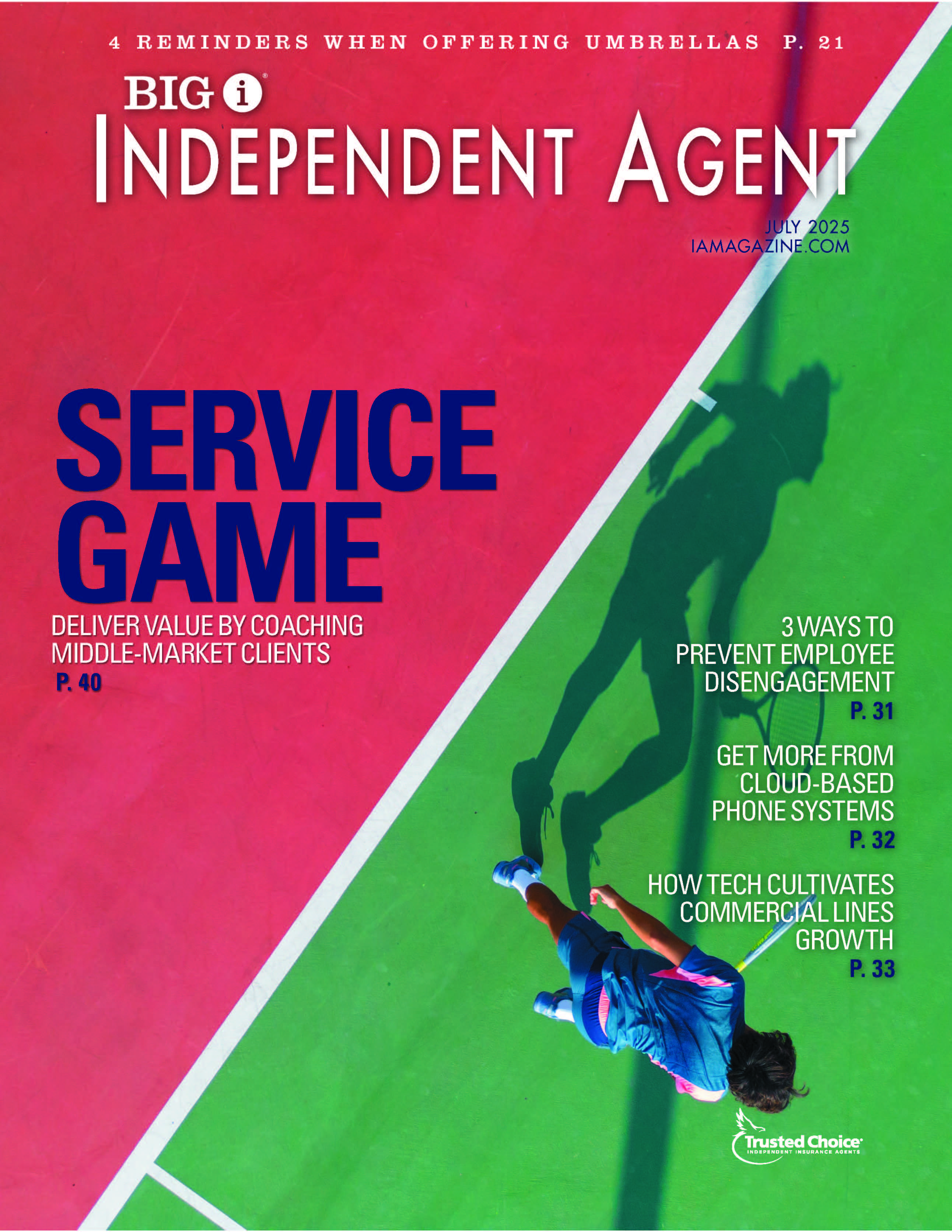Can You Hear Me Now?
By: Andrea Naddaff
Did you know that your brand speaks volumes before you do? Have you stopped to think about what your brand is telling prospects and clients before you even say a word? Does your brand convey the attributes that you sell—trust, caring and responsibility? In today’s world, where people are constantly bombarded with noise, it’s worth stepping back to think about how (and if)… every element of your brand is consistent and clear.
Many people are confused or scared when it comes to insurance, so your job can often begin with overcoming such fears and establishing trust before you can even begin to go down a sales path. In addition, a huge part of the insurance agent’s job is maintaining such trust and building a long-lasting, mutually-beneficial relationship.
It’s difficult to understand a brand if its message is muddled. And in the insurance industry, clear messaging is vital to stand out among the competition. Does your brand convey what you tell your customers?
If your brand’s action doesn’t parallel its message’s words, it can become indistinctive and confusing. When producers selling your agency’s services and products are confused, the customer will also, ultimately, be perplexed. The process starts with an overarching idea—a cohesive message—that cascades to a series of sub-messages targeted to your target audiences.
A strong and cohesive messaging system must be coupled with the right sales toolkit; the combination unifies the message verbally and visually, presenting the brand the way it should be understood by various audiences. Through this method, the much sought-after brand equity, which we define as the sum of time, consistent communication and consistent delivery, is created and attained. While a convoluted message may not necessarily tarnish a blue chip player entirely, it will certainly result in an undisciplined and potentially disregarded brand definition. To the same lengths, a poorly-defined message can hinder a new launch. Here are some tips and trigger points that can help to ensure a better understanding of how a brand speaks to its customers and what it is telling them:
1. Words matter. Make sure all sales and business development staff have reached a level of unison and speak from the same script. Good messaging architecture gives license to use one’s own jargon or speak, but the overall protocol of the messaging system must always be respected.
2. Tools matter. No matter how talented or experienced they might be, all sales and business development professionals need the proper tools to sell and succeed. Whether those tools include PowerPoint presentations, an intranet system that houses the tools or a Word template, they must be developed to function in a way that works for both you and your agency’s producers.
3. Consistency matters. Ensure that all multiplatform and marketing communication channels of the message look and behave like they are from the same brand family. Then, take advantage of social media to express other aspects of the brand’s story that also need and deserve to be told.
Be sure you take a look at how your brand performs and what it conveys when you aren’t able to verbally explain it. The story should be the same, and in the insurance business, that means establishing trust and conveying the feeling that the customer or prospect matters from the very first time they read, see or hear about you.
Andrea Naddaff (www.corey.com) is a partner and vice president, new business development, at Corey McPherson Nash, a national branding and design firm that helps organizations connect with their audiences through brand, print, interactive and social media communications.
One Touch Point, One Brand
From agents trying to build qualified leads to financial advisors selling long-term care insurance, the marriage of a benefit-driven message and a compelling visual dialogue builds and reinforces mindshare, even for upstarts and well-established players.
One successful example of this method can be illustrated in a messaging and website design for the long-term insurance healthcare division of a financial services company. The division provides insurance that helps protect the assets and families of those who might need assistance in the event of illness, an accident or normal effects of aging. With every passing year, such coverage carries even greater significance for financial consultants, insurance agents and consumers (seniors and families) alike. To address what can be a complicated and emotional decision, a simplified messaging system, website and user-experience was created—each working together to educate the audiences about both long-term care and insurance. The visual components support the messages and vice versa—creating a compelling brand story that touches prospect and customers through various senses: sight, sound and vision. Through a cohesive message, the benefits of the coverage are communicated while reinforcing the company’s brand leadership and overall strength.
—A.N.










